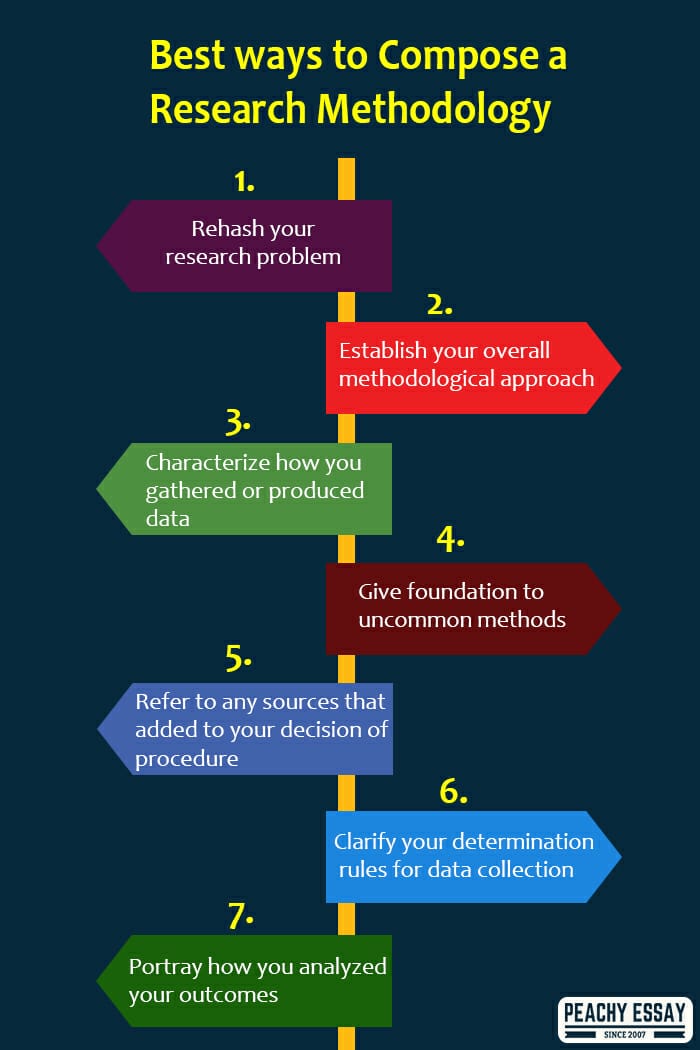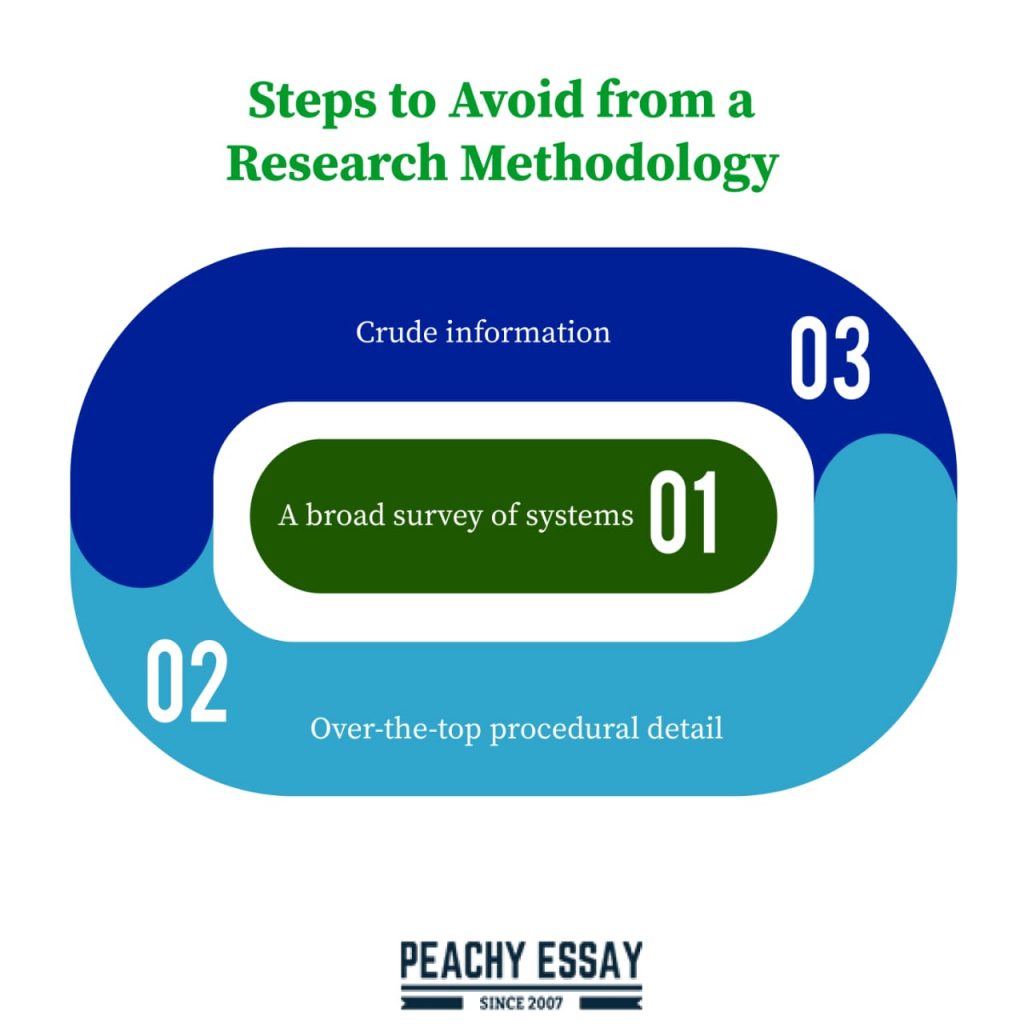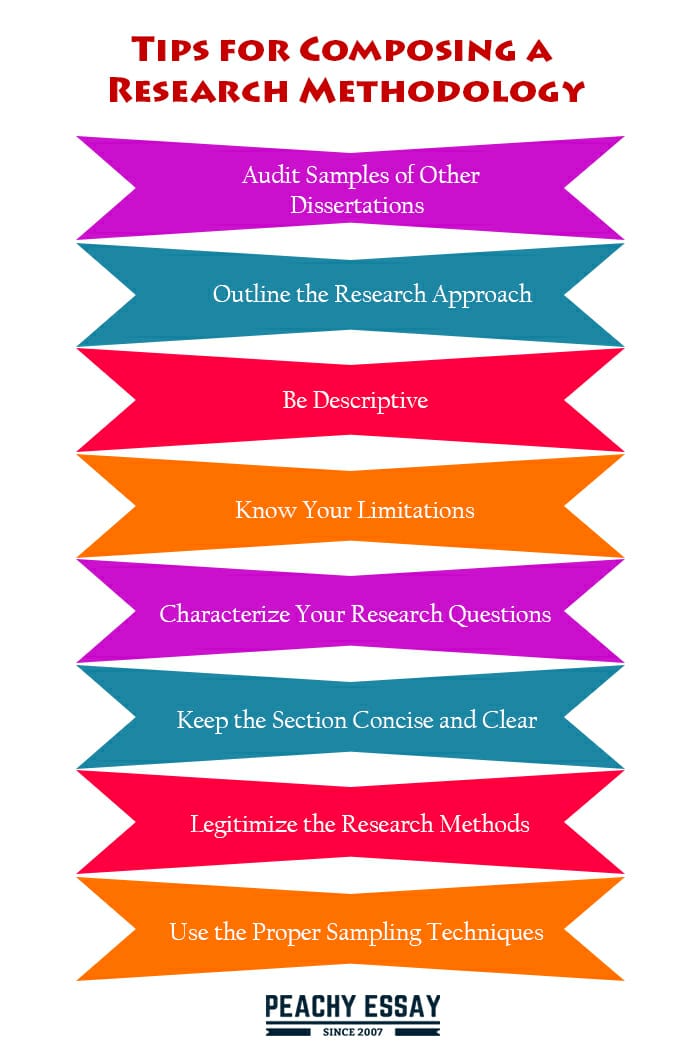Your methodology segment comes after the literature review in your thesis and should stream naturally from it. In your postulation or exposition, you should examine the strategies you used to do your research. The section clarifies what you did and how you did it, permitting readers to assess the research’s unwavering validity and reliability.
What is a Research Methodology?
Research methodology is characterized as the orderly strategy to determine a research issue through information gathering utilizing different strategies, giving a translation of information accumulated, and drawing conclusions based on data. Basically, a research technique is the diagram of exploration or study.
How to Write a Research Methodology
The research approach segment of any scholastic exploration paper offers you the chance to persuade your readers that your research is valuable and will add to your field of study. A compelling exploration strategy is grounded in your general methodology – regardless of whether subjective or quantitative – and sufficiently portrays the strategies you utilized.
Here is the way to compose a research methodology:

Rehash your research problem
Start your research procedure segment by posting the issues or questions you mean to examine. Incorporate your speculations, if pertinent, or what you are deciding to demonstrate through your exploration.
In your repetition, including any hidden assumptions that you’re making or conditions that you’re underestimating. These presumptions will likewise illuminate the exploration strategies you’ve picked.
For the most part, express the variables you’ll test, and different conditions you’re controlling or accepting that are equivalent.
Establish your overall methodological approach
Your general methodology will be either subjective or quantitative. Sometimes, you may likewise utilize a blend of the two methodologies. Momentarily clarify why you picked your methodology.
If you need to research and report quantifiable social patterns, or assess the effect of a specific policy on a different variable, utilize a quantitative methodology zeroed in on information assortment and data analysis.
If you need to assess individuals’ perspectives or comprehension of a specific issue, pick a more subjective methodology.
You can likewise consolidate the two. For instance, you may take a look at a quantifiable social pattern, yet additionally, talk with individuals and hear their thoughts on what that pattern is a meaning for their lives.
Characterize how you gathered or produced data
This bit of your approach area tells your readers when and where you directed your examination and what essential boundaries were established to guarantee the overall objectivity of your outcomes.
For instance, if you led a study, you would portray the inquiries included for the study, where and how the overview was led (for example, face to face, on the web, via telephone), and the number of studies was appropriated, and how long your respondents needed to finish the review.
Incorporate sufficient detail that your investigation can be recreated by others in your field, regardless of whether they may not get similar outcomes you did.
Give foundation to uncommon methods
Especially in the sociologies, you might be utilizing strategies that aren’t regularly utilized or don’t appear to fit your research problem. These strategies may require extra clarification.
Qualitative research strategies regularly require more nitty-gritty clarifications than quantitative techniques.
Essential analytical strategies shouldn’t be clarified in detail. For the most part, you can accept that your readers have an overall comprehension of regular exploration strategies that social researchers use, for example, surveys or focus groups.
Refer to any sources that added to your decision of procedure
If you utilized any other individual’s work to help you create or apply your philosophy, talk about those works and how they added to your own work or how your work is expanding on theirs.
For instance, assume you did a survey and utilized several other exploration papers to help build your study’s inquiries. You would refer to those as contributing sources.
Clarify your determination rules for data collection
In case you’re gathering essential information, you probably set qualification boundaries. Express those boundaries unmistakably and let your readers know why you set those boundaries and how they are imperative to your examination.
Portray study members explicitly, and list any consideration or prohibition rules you utilized while shaping your members’ gathering.
Legitimize your sample’s size, if relevant, and portray how this influences whether your investigation can be summed up to bigger populaces. For instance, if you led an overview of 30% of a college’s understudy populace, you might actually apply those outcomes to the understudy body all in all; however, perhaps not to understudies at different colleges.
Portray how you analyzed your outcomes
Your examination, by and large, relies upon whether your methodology is subjective, quantitative, or a combination of the two. In case you’re utilizing a quantitative methodology, you might be utilizing statistical analysis. With a subjective methodology, state what hypothetical viewpoint or reasoning you’re utilizing.
Contingent upon your examination questions, you might be blending quantitative and subjective investigation – similarly as you might actually utilize the two methodologies. For instance, you may do a measurable investigation and afterwards decipher those measurements through a specific hypothetical focal point.
Kinds of Analysis Strategies
Here are the sorts of examination techniques.
Quantitative
This methodology is regularly utilized by analysts who follow the scientific worldview. This strategy looks to evaluate information and sum up outcomes from an example to an objective populace. It follows an organized information assortment measure with information yield as numbers.
Qualitative
The subjective examination strategy is intended for making a total and itemized portrayal of your perception as a scientist. Maybe than giving expectations and additionally causal clarifications, the subjective technique offers contextualization and understanding of the information accumulated. This examination strategy is abstract and requires fewer deliberately picked respondents.
Read more: Quantitative vs. Qualitative Research
Mixed methods
A contemporary technique sprung from the mix of conventional quantitative and subjective methodologies. The presence of the mixed methods approach originated from its capability to help specialists see social relations and their complexities clearer by intertwining the quantitative and subjective strategies for research while perceiving the impediments of both simultaneously.
Segments of a research approach
Your approach needs to set up a reasonable connection between your research question, the current grant in your field that you have overviewed as a feature of your writing survey, and the methods by which you’ll arrive at your decisions. In this way, regardless of what branch of knowledge you’re working in, your system area will incorporate the accompanying:
A recap of your research question
The key to supporting your technique is exhibiting that it is good to answer the exploration issue or questions you presented toward the beginning. You should recap the key inquiries you need to answer while presenting your philosophy; however, this doesn’t need to be in the same words rehashing; you should rephrase the aspect that connects your writing survey and approach.
A portrayal of your plan or strategy
This is the core of the system; however, it isn’t, without anyone else, a technique. This is the piece of your technique where you plainly clarify your interaction for the get-together and examining information or for moving toward your examination question. This ought to be clear and nitty-gritty enough that another researcher can understand it and apply it here and there, outside of the quick setting of your thesis.
In case you’re offering another hypothetical interpretation of an artistic work or a philosophical issue, your reader ought to have the option to comprehend your hypothesis enough that they can apply it to another content or issue. In case you’re depicting a logical investigation, your reader ought to have all they need to reproduce your trial in a lab. In case you’re presenting another sort of measurable model, your reader ought to have the option to apply this model to their own informational index in the wake of perusing your strategy area.
The background and reasoning for your planned decision
Your approach doesn’t simply portray your strategy; it talks about the reasons why you’ve picked it and why you trust it will yield the best outcomes, the wisest arrangement of examinations and ends, or the most imaginative point of view. This will attract part from your writing audit, introducing your decisions as educated and established in sound grant, while in a perfect world likewise showing development and imagination. You should likewise guarantee that you relate the reasoning for your strategy unequivocally to your exploration issue; it ought to be obvious to your reader that the system you’ve picked is a smart and customized reaction to the inquiries you’re attempting to reply to.
An assessment of your decision of technique and an assertion of its impediments
No research strategy is awesome, and all things considered, the one you’ve picked accompanies certain compromises. You may, for example, have picked a limited scale set of meetings because the individual points on the issue you’re investigating are more significant to you than a bigger arrangement of information about reactions to a similar inquiry. In any case, that implies you’ve by and by forfeited a quantitative way to deal with your difficulty that may have yielded its own arrangement of significant bits of knowledge. Be straightforward and forthright – yet not self-reproachful – about the impediments of your picked strategy, and be prepared to legitimize why it’s the best methodology for your motivations.
What you Ought to Avoid from a Research Methodology
Here is what you should exclude from a research methodology.

A broad survey of systems
It’s conceivable you’ll need to allude to points of reference for your thesis technique and to the scholars or experts upon whose work it is based as you depict your own procedure. Notwithstanding, this isn’t the spot for a comprehensive audit of techniques you’re not utilizing – that work has a place in your writing survey section, and you ought to allude back to that section for setting on why you’re taking (or not taking) a specific methodology.
Over-the-top procedural detail
Your strategy segment ought to prepare a reader to duplicate your exploration; however, it ought to likewise be a discernible part of your thesis and ought to hold the premium of someone who would essentially not like to imitate your examination beginning to end. If it’s feasible to pass on all the data another researcher would require reproducing your work in the body of your paper, doing as such; notwithstanding if your system segment begins to appear as though a shopping show, you should move some exceptional nitty-gritty substance into a supplement and allude to that.
Crude information
The research method section isn’t the spot to duplicate any information, regardless of whether you’re showing how a poll or other information-gathering repairman works. Once more, you can place such data in an informative supplement and allude to it.
Tips for Composing a Research Methodology
A strategy illuminates the audience regarding the techniques utilized in the examination and clarifies the apparatuses utilized to gather information. By and large, this part requires a lot of research and consideration regarding subtleties. It needs to clarify why you did what you did and how you went about it. Fundamentally, it will likely persuade the crowd that your methodology is the correct methodology and will bring about precise discoveries.
Here are the tips for composing a research methodology.

Audit Samples of Other Dissertations
To get an unmistakable picture of what you ought to do in your strategy section, investigate different expositions. Pick the best theses in your field and your theme, or if nothing else, some that are identified with it. By checking on such examples, you will find out about what your procedure ought to resemble.
Thesis tests can furnish you with a critical hotspot for your approach – priority. You can contrast your undertaking with the branch of knowledge if you investigate applicable strategies. Embracing different procedures will give you some power and significance in your exploration.
Outline the Research Approach
What is your examination approach? Decide this before creating the procedure. Else, you will simply be turning in an endless circle.
There are three classes of examination approach: quantitative, qualitative, and blended techniques. Which one is best for your exploration?
Quantitative exploration utilizes measurements and mathematical information as to its centre.
Subjective exploration centres on implications and subjectivity
Blended techniques research joins the subjective and quantitative methodology.
Picking some unacceptable methodology can prompt a seriously investigated subject, so ensure that you think about your methodology in detail. This is the thing that the technique segment serves for – to demonstrate that you have picked the most solid way to deal with research the right way.
Be Descriptive
Your technique ought to be just about as engaging as could be expected. Take a stab at separating the research measures, clarify the information bit by bit, and talk about each stage altogether. This will assist the reader with seeing how you showed up to the discoveries in the paper.
This isn’t all. You likewise need to legitimize every one of your decisions since information all alone isn’t actually dependable. Give a lot of detail on why you picked the particular methodology, why you chose to utilize the procedures you picked, and so on. If you answer every one of these inquiries in the strategy area, you make the perusing cycle a lot simpler for the crowd.
Know Your Limitations
If you need to do a quality thesis, you should know the paper’s qualities and impediments. The technique area should serve to introduce these restrictions to the crowd.
Try not to restrict yourself to the absence of assets. Examine constraints of each sort, including those that outcome from a purposely settled decision or human mistake. Likewise, consider morals and attempt to satisfy the moral guidelines expected of you. This implies that you can’t utilize data without assent from all members.
Characterize Your Research Questions
Your procedure area should serve to depict the instrument used to address all research questions. Hence, you are needed to characterize these inquiries before disclosing the strategy used to respond to them. If you neglect to finish this progression appropriately, your technique will be deficient and obscure.
Keep the Section Concise and Clear
The approach area should introduce you as an educated author with a particular reason and wide comprehension of the subject. To accomplish this, consistently intend to compose clear and brief sentences that express your real thoughts straightforwardly.
Your philosophy segment isn’t the spot to utilize lovely language. This is one of the vital pieces of the examination and ought to convey all important data compactly and unmistakably.
Legitimize the Research Methods
Regardless of whether you present your strategies succinctly and plainly, the reader will request legitimization for them. To consider yourself to be a solid one, the crowd needs to have confidence in your procedure. Along these lines, you should legitimize all examination strategies introduced in this segment.
This is particularly significant if you are utilizing a non-standard, new system to go to the solutions to your exploration questions. Else, you can refer to other pertinent investigations and legitimize your approach on the premise of their discoveries.
Use the Proper Sampling Techniques
Testing can be perplexing if you don’t give sufficient consideration. The size and procedures used to take tests are significant for your exploration, which is why you should zero in on picking the method that best accommodates your methodology.




